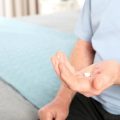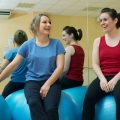Understanding the Importance of Hydration in Recovery
Hydration plays a pivotal role in post-injury recovery, underpinning both the body’s natural healing mechanisms and overall wellbeing. Scientifically, water facilitates cellular repair, nutrient transport, and the efficient removal of metabolic waste—processes that are particularly crucial following physical injury. In the context of the UK’s varied climate, where cool temperatures can often mask thirst and reduce perceived fluid needs, maintaining adequate hydration becomes even more essential. Everyday routines such as commuting in damp weather or engaging in light exercise indoors can further affect hydration status, sometimes leading individuals to underestimate their fluid requirements. By prioritising hydration, those recovering from injury can enhance tissue regeneration, support immune function, and optimise joint lubrication, all of which contribute to a faster and more effective rehabilitation process tailored to the British lifestyle.
2. Recognising Dehydration During Post-Injury Periods
Following an injury, maintaining adequate hydration is often overlooked despite its critical role in recovery. During the post-injury period, dehydration can occur more readily due to factors such as limited mobility, changes in daily routines, and the body’s increased demand for fluids to support healing processes. Recognising the signs and symptoms of dehydration early is vital to avoid complications that could hinder recovery.
Common Signs and Symptoms of Dehydration
Dehydration can manifest in several ways, particularly during the recovery phase when regular habits may be disrupted. Typical indicators include:
| Sign/Symptom | Description | British Context Example |
|---|---|---|
| Thirst | A basic but often overlooked sign; may be less noticeable if on medication or resting indoors | Forgetting to drink water while recuperating on the sofa during a rainy afternoon |
| Dark-coloured urine | Urine that appears amber or dark yellow is a classic marker of dehydration | Noticing darker urine after a morning of limited tea and water intake |
| Fatigue and lethargy | Lack of fluids can lead to sluggishness and lower energy levels, making rehabilitation exercises harder | Feeling unusually tired during physiotherapy sessions at an NHS clinic |
| Dizziness or lightheadedness | Especially common when standing up quickly after sitting or lying down for extended periods | Experiencing dizziness when getting out of bed in a cool British home without central heating |
| Dry mouth and lips | The mucous membranes become dry, leading to discomfort and possible issues with swallowing medication | Suffering from a dry mouth after taking prescribed painkillers with minimal water intake |
Risks of Dehydration During Recovery in the UK Setting
The risks associated with dehydration are magnified during post-injury periods. In the British context, where variable weather conditions and indoor heating can influence fluid needs, it’s crucial to remain vigilant. Dehydration may slow wound healing, impair immune response, and increase susceptibility to urinary tract infections—particularly concerning for those who are elderly or managing chronic conditions alongside their injury.
Everyday Scenarios Elevating Dehydration Risk
- Reduced Activity: Staying indoors during colder months may reduce perceived thirst.
- Medication Side Effects: Common prescriptions such as painkillers or anti-inflammatories may have dehydrating effects.
- Lack of Routine: Disrupted schedules can mean missing regular tea breaks or meals—both key moments for fluid intake in British daily life.
- Cultural Habits: Preference for caffeinated drinks like strong black tea, which can act as mild diuretics if consumed in excess.
Towards Effective Hydration Awareness Post-Injury
A keen awareness of these signs and risk factors within everyday British routines enables individuals recovering from injury—and their caregivers—to intervene early. This proactive approach not only supports physical recovery but also helps maintain overall well-being during what can be a challenging period.
![]()
3. Hydration Guidelines for the UK Environment
Hydration needs can vary significantly depending on one’s environment, and the UK presents some unique considerations for post-injury recovery. Unlike hotter climates where sweating is more pronounced, the British weather—characterised by frequent rainfall, mild summers, and chilly winters—can sometimes mask dehydration risks. It is therefore crucial to tailor fluid intake recommendations not only to individual needs but also to these environmental factors.
Understanding Daily Fluid Intake
The NHS generally recommends consuming 6–8 glasses (roughly 1.5–2 litres) of fluids per day as a baseline. However, after an injury, your body may require more fluids to support tissue repair and metabolic processes. Individuals recovering from injuries should aim towards the upper end of this range, or even slightly above it if advised by a healthcare professional.
British Weather Considerations
The often cool and damp British climate might lead people to underestimate their hydration needs, especially in winter when thirst cues are less obvious. Additionally, indoor heating during colder months can increase fluid loss through evaporation from the skin and respiratory tract. This means that even in the absence of heatwaves, consistent hydration remains vital throughout the year.
Impact of Local Dietary Habits
Traditional British diets often include tea, coffee, and other hot beverages. While these drinks do contribute to overall fluid intake, excessive caffeine can have a mild diuretic effect, so balance them with water or non-caffeinated alternatives. Incorporate water-rich foods such as soups, fruits (like apples and pears), and vegetables into your meals to further support hydration goals during recovery.
Practical Tips for Everyday Hydration
– Start your day with a glass of water before your morning cuppa.
– Carry a reusable bottle and sip throughout the day, regardless of whether you feel thirsty.
– If using indoor heating, increase your water intake slightly to compensate for additional fluid loss.
– Monitor urine colour as a practical indicator: pale straw suggests adequate hydration.
– Adjust fluid intake based on activity level and specific guidance from health professionals overseeing your recovery.
By considering these UK-specific environmental and cultural factors, you can establish a more effective hydration strategy that supports optimal healing during your post-injury recovery process.
4. Practical Hydration Strategies at Home and Rehabilitation Settings
Maintaining optimal hydration during post-injury recovery is essential, whether you are recuperating at home or within an NHS rehabilitation setting. Below, we outline practical, actionable strategies tailored to British lifestyles and preferences that can make fluid management both effective and manageable.
Everyday Hydration Tips for Home
At home, it’s crucial to establish routines that encourage regular fluid intake without causing inconvenience. Here are several strategies:
- Set Timed Reminders: Use your mobile phone or smart home devices to set hourly reminders to drink water or other fluids.
- Incorporate British Favourites: If plain water feels monotonous, try adding a splash of no-added-sugar squash, herbal teas (such as chamomile or peppermint), or weak black tea. These options can boost hydration while aligning with British tastes.
- Visible Cues: Keep a reusable bottle or jug filled with water on the kitchen counter or beside your favourite chair as a visual prompt.
- Pair Fluids with Daily Activities: Drink a glass of water before each meal and after any physiotherapy session at home to build hydration into your routine.
Hydration in NHS Rehabilitation Settings
NHS rehabilitation environments often provide structured schedules, but personal responsibility for hydration remains key. Consider these approaches:
- Collaborate with Staff: Ask nurses or therapists to include fluid breaks as part of your therapy timetable.
- Select Suitable Fluids: Take advantage of NHS offerings such as squash, decaffeinated tea, or lightly flavoured water if available. For those who prefer warm drinks, opt for herbal teas which are hydrating and comforting.
- Track Your Intake: Use a simple chart or ask staff for assistance in logging your daily fluid consumption to ensure targets are met.
Quick Reference Table: Popular British Fluid Choices
| Beverage | Hydration Value | Cultural Notes |
|---|---|---|
| No-added-sugar squash | High | A staple in many UK homes; encourages fluid intake through pleasant taste |
| Herbal teas (e.g., chamomile) | High | Caffeine-free; widely enjoyed in the UK for relaxation and comfort |
| Weak black tea | Moderate | A classic British beverage; choose decaf for extra hydration benefits |
| Tonic water (sugar-free) | Moderate | A refreshing alternative; check sodium content if advised by clinicians |
| Sparkling water with lemon/lime slice | High | Adds interest without added sugar; popular at home and in hospitals alike |
Key Reminders for Effective Hydration Management
- Aim for small, frequent sips rather than large volumes at once, especially if mobility is limited post-injury.
- If cognitive impairment is present, enlist family members or NHS staff to prompt regular fluid intake.
- Monitor urine colour—aim for pale straw colour as an indicator of good hydration status.
- Avoid high-caffeine drinks and sugary sodas as they may impede optimal hydration and recovery.
By integrating these practical strategies into both home life and rehabilitation environments, individuals recovering from injury can support their body’s healing processes effectively while respecting British cultural preferences and everyday routines.
5. Adapting Hydration for Special Circumstances
Hydration strategies during post-injury recovery are rarely one-size-fits-all, especially given the diversity of individual circumstances across the UK. This section examines key considerations and practical adjustments needed to meet unique hydration requirements, taking into account factors such as medication side effects, mobility limitations, and the influence of cultural dietary patterns.
Medication Side Effects and Fluid Balance
Certain medications commonly prescribed during recovery—such as diuretics, painkillers, or anti-inflammatory drugs—can significantly impact fluid balance. For example, diuretics increase urine output and may heighten the risk of dehydration, while some painkillers can cause constipation, requiring more fluids to support digestion. It is crucial to consult with healthcare professionals regarding how specific prescriptions might alter your hydration needs. Where appropriate, establish a routine that includes regular water intake and monitor for signs of both dehydration (such as headaches or dark urine) and overhydration.
Mobility Limitations: Overcoming Barriers
Post-injury recovery often involves reduced mobility, whether due to bed rest or restricted movement. This limitation can make accessing water independently a challenge. Practical solutions include keeping a lightweight water bottle within arm’s reach, using straws or spill-proof cups, and scheduling regular reminders for carers to offer fluids. In hospital or home care settings throughout the UK, involving occupational therapists can help tailor these adaptations further to ensure sufficient hydration without adding strain.
Cultural Dietary Patterns Across the UK
The UK’s multicultural landscape means that dietary habits—and sources of hydration—vary widely. Some communities may consume less plain water but obtain fluids through traditional drinks such as herbal teas (e.g., peppermint or chamomile), diluted squash, or soups. While these contribute to overall fluid intake, it is important to be mindful of caffeine or sugar content in certain beverages. Encouraging a blend of culturally familiar fluids alongside water supports both adequate hydration and comfort during recovery.
Tailoring Hydration Plans for Individual Needs
Ultimately, optimal hydration in post-injury recovery should be personalised. Consider creating a simple daily hydration chart that reflects not only medical advice but also personal preferences and lifestyle realities. Regularly reviewing this plan with healthcare providers ensures ongoing suitability as recovery progresses. By acknowledging and addressing individual needs—whether related to medication, mobility, or culture—patients across the UK can achieve better outcomes in their rehabilitation journey.
6. Monitoring Progress and Seeking Professional Guidance
Maintaining proper hydration during post-injury recovery is an ongoing process that requires continuous assessment and adaptation. Understanding how to monitor your hydration status, knowing when to seek advice from NHS professionals, and tailoring strategies based on expert guidance are essential for optimal recovery in a UK context.
Tracking Hydration Status
One of the most practical ways to track hydration is by observing changes in urine colour—a pale straw shade typically indicates adequate hydration. Additionally, monitoring the frequency of urination, feelings of thirst, and symptoms such as headaches or dizziness can offer valuable insights. Keeping a daily log of fluid intake may also help identify patterns or gaps in your hydration habits.
Recognising Warning Signs
It is crucial to be aware of symptoms that suggest dehydration or overhydration, especially when recovering from an injury. Signs such as dark urine, persistent fatigue, dry mouth, or confusion should not be ignored. These indicators highlight the need for further evaluation and possible adjustments in your hydration approach.
When to Consult NHS Professionals
If you experience persistent symptoms despite self-management efforts, it is wise to consult your GP or NHS 111 for further advice. Individuals with pre-existing health conditions—such as kidney issues, heart problems, or those taking certain medications—should proactively engage with healthcare providers to ensure their hydration plan aligns with their medical needs. NHS professionals can also offer tailored recommendations on appropriate fluid types and quantities based on your unique circumstances.
Adapting Strategies Based on Expert Advice
Following professional guidance may involve modifying your fluid intake schedule, incorporating electrolyte-rich drinks if recommended, or addressing any barriers to hydration specific to your recovery process. By regularly updating your strategies in consultation with healthcare experts, you can better support tissue repair, prevent complications, and foster a smoother return to everyday activities.
Conclusion: Personalising Your Hydration Approach
In summary, successfully managing hydration after an injury in the UK involves regular self-monitoring, timely engagement with NHS resources, and a willingness to adapt based on expert input. This structured approach not only promotes healing but also empowers you to take an active role in your recovery journey.


